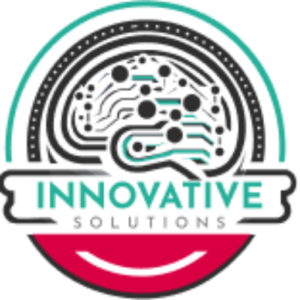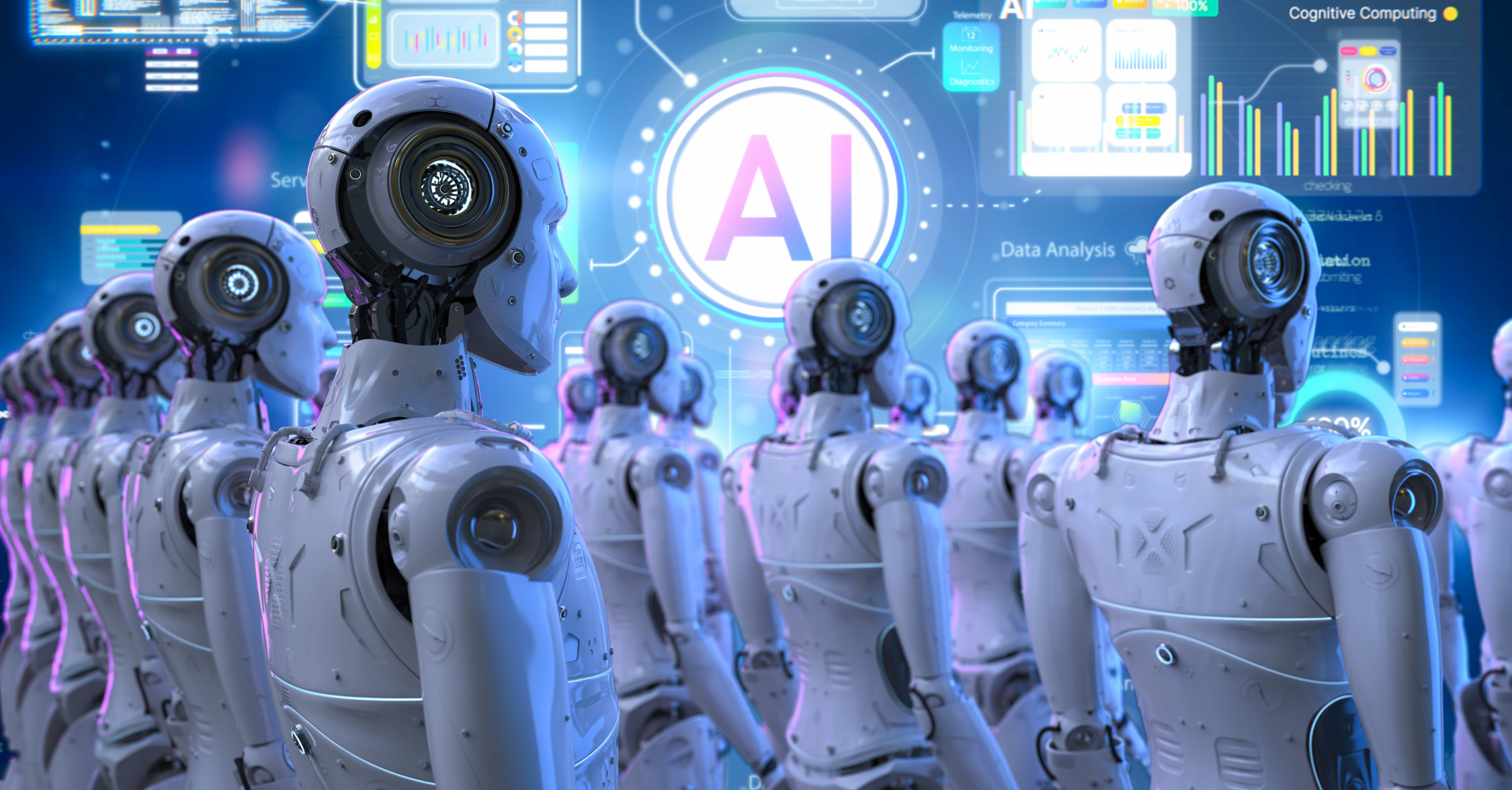Teachers today are spending far too much of their workdays on non-teaching duties – a burden that erodes instructional quality and job satisfaction. A nationally representative survey found a typical teacher works a median of 54 hours per week, yet only about 46% of that time is spent on direct instruction[1]. The rest is consumed by grading, lesson planning, paperwork, meetings, and other administrative tasks. For example, teachers report spending 5 hours a week grading student work and another 3 hours on general administrative work[2]. In total, educators often clock up to 29 hours per week on non‑teaching chores such as emails, data entry, and logistics[3]. Even more strikingly, 84% of teachers say they don’t have enough time to complete all their responsibilities[4]. This administrative overload not only creates stress and burnout – a factor in high turnover – but also means less time connecting with and instructing students. Studies warn that as routine tasks crowd teachers’ schedules, opportunities for deeper mentorship, project‑based learning, and individualized support suffer[5][2].
“Teachers spend up to 29 hours a week doing non‑teaching tasks … writing emails, grading, finding classroom resources, and carrying out other administrative work,” notes an Education Week report[3]. By contrast, only a fraction of their effort is left for face‑to‑face teaching. The result is a high‑stress profession where many educators feel like clerks rather than mentors. Left unchecked, this trend can blunt teaching effectiveness and hinder student outcomes[2][5].
Fortunately, artificial intelligence (AI) is emerging as a powerful ally to lighten the load. A growing number of AI‑driven tools – from automated graders to smart assistants – are now available to take on routine tasks, freeing teachers to focus on what matters most: teaching, mentoring, and coaching students. In effect, AI is giving teachers “back cognitive superpowers”[6] by automating the grunt work. One review of recent research concludes that AI tools “significantly save time for teachers, enhancing instructional efficiency”[5]. In practice, schools implementing AI report that educators are reclaiming hours each week and shifting their energy toward individualized instruction.

AI Tools Streamlining Non‑Teaching Tasks
AI technologies are now sophisticated enough to handle many of the chores that traditionally consume teacher time. Key examples include:
- Automated grading and feedback: AI‑powered grading tools can instantly score assignments (even written work) and generate personalized feedback. Instead of spending hours poring over papers or digital submissions, a teacher can let an AI assistant evaluate student work and highlight areas for improvement[7][8]. One case study notes that with AI automation, “assignments were graded instantly, with detailed performance analytics provided for teachers,” saving countless hours each week[9][8]. Such systems not only grade more quickly but also consistently – allowing teachers to spend the time that would have been grading on discussing the results with students.
- Smart lesson‑planning and content creation: Instead of starting every lesson plan from scratch, teachers are turning to AI to generate first drafts of materials. For example, an AI assistant can produce a lesson on a topic like photosynthesis in seconds, which a teacher then refines to fit their class[10]. Similarly, platforms are now capable of generating customized reading passages or problem sets at multiple levels of difficulty. In Long Beach Unified School District, educators use Panorama’s AI platform to automatically create leveled reading passages tailored to each student’s interests – a process that once took teachers hours of research[11]. By doing the heavy lifting on content creation, AI lets teachers invest more time in pedagogy and personal touches.
- Automated communication: Writing countless emails, parent newsletters, or progress reports is a massive time sink. AI chatbots and language tools can draft and polish communications in moments. For instance, a teacher might feed a rough note to an AI tool to generate a well‑worded parent email or translate a message into another language. Educators in surveys report using AI to “clarify information” or professionalize letters to parents in a fraction of the usual time[12]. In district pilot programs, AI systems have even generated meeting summaries from audio recordings, further cutting clerical workload[10].
- Data analysis and student analytics: Schools collect mountains of data on attendance, grades, behavior, and more – but teachers rarely have time to analyze it. AI dashboards can digest that data and spot trends instantly. For example, AI can flag students falling behind or patterns of chronic absenteeism, allowing teachers to intervene early. In one AI case study, analytics “highlighted student progress, enabling teachers to focus on those needing extra help”[8]. Another district used AI to align its entire MTSS (Multi-Tiered System of Supports) framework with real-time data, dramatically speeding up what was once a laborious process[13]. In short, AI amplifies teachers’ insight into their own students by sifting data and generating actionable reports.
- Scheduling and logistics: Even things like school scheduling are getting easier. Traditionally, building a master schedule could take district staff months of negotiations over rooms, teacher assignments, and course offerings. AI optimization can slash that to minutes. For example, one district partnered with AI specialists to ingest their constraints (teacher availability, room capacity, regulations) and produce an optimal schedule in under 5 minutes[14]. The outcome? Administrators and teachers can respond to staffing changes in real time, and class imbalances have been greatly reduced – leading to a “better overall educational experience for students and teachers”[15]. Similarly, AI‑driven rostering tools ensure subs and student groupings are handled efficiently without hours of manual tweaking.
- Routine housekeeping (attendance, reminders, etc.): Beyond these headline uses, AI can automate smaller tasks that add up. Smart attendance systems – for example, using facial recognition or badge scanning – can eliminate roll call duties. AI voice assistants in the classroom can set timers, take notes, or control lights and displays, so the teacher doesn’t have to flip switches or write on every slide[16]. Some schools are even piloting AI check-in systems that text absent students’ families automatically. Each small automation may only save a minute or two at a time, but collectively they return precious minutes to teachers’ days.
According to recent data, these AI solutions are making a measurable difference. In fact, one industry report found that “teachers using AI for administrative tasks save 44% of their time on research, lesson planning, and material creation.” This kind of time savings can be transformative: it means nearly half of a teacher’s non‑instructional workload could be handled by AI[17]. (No wonder 60% of teachers now say they’ve incorporated AI into their routines for things like creating lesson plans or gathering resources[18].) In short, AI is turning hours of paperwork into seconds of processing – giving educators much-needed breathing room.
Key AI-Driven Time-Savers:
• Automated Grading: Instantly score tests and essays, freeing up hours of grading[7][8].
• Lesson-Planning Aids: Generate draft lesson plans, worksheets, or quizzes with AI prompts[10].
• Data Dashboards: Real-time student analytics identify learners who need help, enabling timely intervention[8][19].
• Communication Helpers: Auto-draft emails, newsletters, and translations in seconds[12][10].
• Optimized Scheduling: AI scheduling creates master timetables in minutes (instead of months)[14][15].
• Smart Attendance: Automated systems log attendance via facial recognition or apps, avoiding manual roll call.
These AI tools free up teachers’ calendars. With less time spent on clerical work, educators can use those reclaimed hours for personalized instruction, mentoring, or simply more planning time. One case report sums it up: “Teachers saved hours each week by automating administrative tasks,” and as a result they had “more time for creative lesson planning and meaningful student interactions.”[8]. Another district saw that by deploying AI tutors and streamlining admin, “teachers reported feeling less overburdened, leading to improved job satisfaction and classroom dynamics.”[20].

Case Studies: AI in Action
Many schools and districts are already reaping these benefits. Consider a few real-world examples:
- Long Beach Unified School District (California): Educators in LBUSD use Panorama Education’s Solara AI platform to generate personalized reading passages for students. The system takes a student’s Lexile level and interests (e.g. surfing, art) and instantly creates on-level content that engages that child[11]. What used to require hours of teacher work – finding or writing appropriate reading material – now takes seconds. Teachers report that this AI‑driven personalization keeps students more engaged and allows teachers to focus on discussion and follow-up rather than content creation.
- Boston Public Schools (Massachusetts): Boston’s MTSS (Multi-Tiered System of Supports) team integrated AI analytics to handle intervention planning. Instead of manually sifting through spreadsheets of test scores and behavior logs, teachers use AI to align supports with the latest data. As one leader put it, “We’re not just saying ‘differentiate this lesson’ or ‘what’s a good intervention?’ – we’re actually using a secure system with data we have…to inform our planning.”[13]. The AI tools helped Boston teachers quickly identify which students needed remediation and what supports to provide, significantly reducing the planning time for individualized interventions.
- Class Scheduling (Various Districts): A large school district engaged AI firm Data317 to tackle its notoriously complex master scheduling. By encoding each school’s requirements and constraints into an AI model, the district went from months of work to under 5 minutes to generate an optimal schedule[14]. Not only did this save administrators an immense amount of time, it also improved outcomes: teacher assignments were balanced more fairly, class sizes evened out, and administrators could respond rapidly to staffing changes without disrupting the whole schedule. The district reported that, with scheduling off their desks, staff had “more time and resources to focus on the important task of teaching our children”[15].
- Teacher Burnout / Workload Management: One high school wrestling with burnout turned to an AI workload management tool. Routine tasks like grading and progress tracking were automated, and the AI even suggested personalized lesson plans based on student data[21]. The result: teachers saw their administrative hours plummet. “Teachers experienced significant relief from time-consuming tasks, allowing them to dedicate more time to engaging with students,” the report noted[22]. By removing repetitive work, teachers felt more energized, and the school observed “timely support to students in need, fostering greater engagement and enthusiasm in the classroom.”[23].
- AI Tutoring Integration: Some districts facing teacher shortages have deployed AI tutors alongside live instructors. In one Midwestern district, AI-driven tutoring systems provided on-demand practice in subjects like math and science, while certified teachers were live-streamed into classrooms to handle complex instruction[24][25]. The blended approach meant that routine practice problems or review sessions could be handled by AI, freeing the teacher to focus on higher-order teaching. Within a year, the district saw “students showing a noticeable boost in participation and confidence,” and “teachers reported feeling more supported and better able to focus on their students”[26]. Crucially, administrators noted that student outcomes remained strong, even improved, because students had continuous access to both human and AI tutors.
These cases illustrate a common theme: when AI handles the repetitive or data-heavy work, educators can spend more time on students. Observers frequently note that such implementations “created a more supportive environment for educators, helping them reclaim valuable time and focus on teaching”[20]. In other words, reduced admin burdens translate directly into better teaching and learning experiences.
The Evolving Role of Teachers: From Instructors to Mentors
As AI automates routine tasks, the nature of teaching is shifting. No longer are teachers expected to deliver every piece of content themselves; instead, they increasingly serve as mentors, coaches, and facilitators of learning. Experts agree: AI should enhance, not replace, the teacher’s role[27]. In a recent global education forum, leaders emphasized that tools like Khan Academy’s Khanmigo and other AI tutors are designed “to support teachers by reducing administrative workload, personalizing learning for students, and helping with lesson planning,” while leaving the “facilitators/guides” in charge of student engagement and emotional connection[27].
This is a profound shift. As one World Bank/EdTech Hub panelist noted, teachers will increasingly move from “information providers” to guides who help students critically engage with material and use AI wisely[28]. Instead of lecturing facts, the teacher’s unique human skills – empathy, motivation, creativity, and the ability to inspire – become paramount. With AI handling personalization (adjusting pace, answering routine questions, generating practice problems), teachers can devote more attention to coaching students on complex thinking, collaboration, and socio-emotional learning.
The U.S. Department of Education’s recent AI report underscores this vision. Citing a McKinsey study, it notes that AI’s “initial benefit could be to improve teaching jobs by reducing low-level burdens in administrative or clerical work.”[29] In concrete terms, if an AI assistant can manage scheduling, reminders, or data-entry, that “recovered time” can be “rededicated toward more effective instruction”. Other examples in the report imagine AI voice assistants helping a teacher remember to send a helpful resource to a student, or drafting personalized notes to families based on classroom data[16][30]. The key idea is that AI multiplies a teacher’s efforts rather than substituting for them.
For instance, one scenario describes a teacher who only has time to sit with a student for a few math problems. An AI tutoring system can then take over the remaining practice, following the teacher’s guidelines. The teacher “cannot be at their best if on call at all hours,” the report says, but with AI, “students have support wherever and whenever they do homework.”[31]. Importantly, the teacher still defines the type of help (hints, feedback) the AI provides, and reviews AI‑generated comments or translations for parents. In this way, AI extends the teacher’s reach outside the classroom without replacing the teacher’s expertise or relationship with students.
In summary, the evolving role of educators in an AI‑augmented classroom is one of mentor, coach, and human guide. AI handles the drudgery; teachers handle the humans. As one futurist writes, “When AI takes care of repetitive parts of the job, human resources can be focused on developing learning content and mentoring students.”[32] Education leaders and policy experts echo this optimism: AI tools free teachers to teach in the fullest sense, making the learning experience richer and more personal.

AI Tutors and Virtual Instructors: Allies, Not Replacements
A related point is the rise of AI tutors and virtual instructors. Chatbots and intelligent tutoring systems can provide one-on-one practice, answer questions, and even simulate conversation (for language learning, for instance). It’s natural to wonder: will these tools make teachers obsolete? The clear answer from experts and practitioners is no – they are designed as complements, not substitutes.
For example, Khan Academy’s Khanmigo (an AI tutor) is explicitly positioned as an assistant. It provides students with hints and explanations, but teachers still craft the curriculum, monitor usage, and intervene where needed[33]. Similarly, AI chatbots can offer after-school support, but they operate according to the teacher’s guidance. As noted earlier, if a teacher sets a particular methodology or style, the AI follows it. This way, the teacher’s pedagogical intent and oversight remain central.
Real-world pilots reinforce this model. In the aforementioned Midwest district, AI tutoring systems supplemented live instruction during a teacher shortage[24][25]. Crucially, a certified teacher was still involved via live-stream to handle questions the AI couldn’t. The AI covered routine practice at each student’s pace, but the teacher ensured that personalized strategies were in place. District officials observed that students received consistent, high-quality instruction thanks to the blend of AI and human teaching[24]. Meanwhile, teachers appreciated that AI tutors allowed them to “focus on higher-order tasks and student interactions while AI tools managed routine instruction.”[25].
Experts emphasize that this team approach is how AI should work in schools. A global education panel put it succinctly: “AI should enhance, not replace, the role of teachers.”[27]. In practice, this means AI handles personalization and scaling (for example, providing extra practice to students who need it) while teachers focus on coaching and connection. Teachers still provide the critical human touch – motivating students, resolving misunderstandings, and teaching social skills – that AI cannot replicate.
Of course, careful implementation is key. Schools should select AI platforms that give teachers control over content and data, ensure compliance with privacy laws (FERPA/COPPA), and keep the teacher in the loop[34][35]. Proper training is essential so educators know how to interpret AI feedback and correct errors. But with these guardrails in place, AI tutors become trusted aides in the classroom.
EchoSphere Technologies: Your Partner in AI-Enhanced Education
The shift to an AI‑augmented classroom is well underway, and EchoSphere Technologies stands ready to help schools make the transition smoothly and effectively. As EchoSphere’s own Innovative Education initiative describes, we are committed to “reshaping traditional learning paradigms by harnessing innovation and cutting-edge methodologies”[36]. In practice, this means we develop and integrate educational technologies – including AI‑driven systems – that empower teachers and engage students.
Working with EchoSphere means more than just buying software; it means having a partner who understands the unique needs of schools. Our team will collaborate closely with your educators to pilot AI solutions that fit your existing curriculum and infrastructure. We emphasize data privacy and provide comprehensive training so that your staff feel confident using these tools. And because we value your feedback, we iterate on the technology together, ensuring it truly saves teachers time and enhances learning.
Imagine your teachers with hours regained each week: not grading papers or writing the same emails over and over, but coaching a student through a math concept, facilitating a group project, or exploring a creative art assignment. That vision is within reach. EchoSphere Technologies can help you implement AI systems – from automated graders to smart scheduling and adaptive learning platforms – that offload administrative tasks and analytics. In doing so, we help teachers rediscover their passion for teaching and build stronger relationships with students.
We encourage school leaders and educators to take the next step. Explore how AI can fit into your school’s workflow. Talk to us about your pain points, and together we will design a phased rollout of AI tools that addresses them. Let EchoSphere be the bridge that connects cutting-edge technology with classroom realities. With a trusted partner by your side, you can transform your school’s environment so that teachers spend their energy on mentorship, not paperwork.
Contact EchoSphere Technologies today to learn how our AI-enhanced education solutions can streamline your administrative processes, foster personalized learning, and ultimately elevate the teacher‑student relationship. Together, we can build a future where technology works for educators – empowering them to be the mentors and coaches our students deserve.
[1] [2] How Teachers Spend Their Time: A Breakdown
https://www.edweek.org/teaching-learning/how-teachers-spend-their-time-a-breakdown/2022/04
[3] [12] Here’s How Teachers Are Using AI to Save Time
https://www.edweek.org/technology/heres-how-teachers-are-using-ai-to-save-time/2025/02
[4] [6] Maximizing Teaching Time Through Research-Based Efficiency Strategies – Seesaw | Elementary Learning Experience Platform
https://seesaw.com/blog/maximizing-teaching-time-through-research-based-efficiency-strategies/
[5] Evaluating the Impact of Artificial Intelligence on Reducing Administrative Burden and Enhancing Instructional Efficiency in Middle Schools | Current Perspectives in Educational Research
https://cuperjournal.org/index.php/cuper/article/view/48
[7] [10] [11] [13] [19] [34] [35] Improving Teacher Retention with AI
https://www.panoramaed.com/blog/improve-teacher-retention-with-ai
[8] [9] [20] [21] [22] [23] [24] [25] [26] AI case studies | Teacher Assistant
https://www.teacher-assistant.com/ai-case-studies
[14] [15] AI School Scheduling Case Study – Data317
https://www.data317.com/work/school-scheduling
[16] [29] [30] [31] Artificial Intelligence and the Future of Teaching and Learning (PDF)
https://www.ed.gov/sites/ed/files/documents/ai-report/ai-report.pdf
[17] [18] 20 Statistics on AI in Education to Guide Your Learning Strategy in 2025
https://www.engageli.com/blog/ai-in-education-statistics
[27] [28] [33] AI Tutors and Teaching: How Might the Role of the Teacher Change in an Age of AI? – EdTech Hub
https://edtechhub.org/2025/05/21/how-might-the-role-of-the-teacher-change-in-an-age-of-ai/
[32] Future of education: AI becomes the teacher while humans mentor and coach — Futures Platform
[36] Services – EchoSphere Technologies







